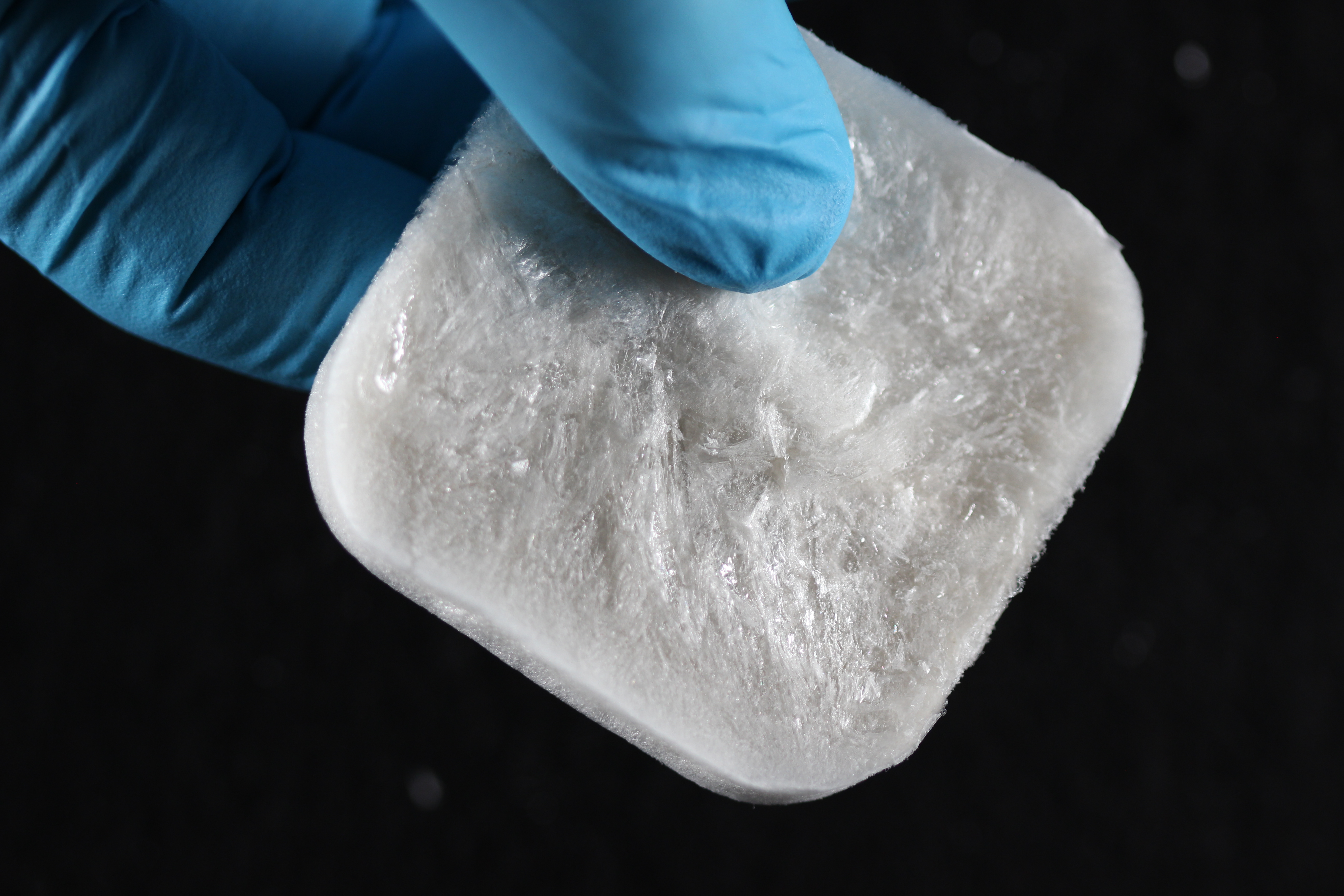

Negative-pressure and oxygen therapy are currently well-established and methods that promote the healing of chronic, extensive wounds. Up until now, though, there have not been any application systems available that offer a combination of these two effective treatment methods. This is the starting point of the joint project “ProTect”. Together with the 1+ Steri Medizinprodukte GmbH in Halberstadt and employees of the Fraunhofer Institute for Microstructure of Materials and Systems IMWS conducting research at the University Clinic of Halle (Saale) on a pulse lavage system intended to help large and small wounds heal more quickly using innovative coatings on a pulsating, flexible wound dressing.
When caring for wounds, dressings are used to absorb blood and wound fluids and simultaneously protect the wound from dirt, bacteria, and mechanical irritation. They also influence the humidity and temperature conditions of the wound and therefore aid the healing process. Depending on the size and type of injury, there are various types of wound dressings available on the market.
A particular challenge is posed by patients who often stay in bed due to their immobility. Due to the increased pressure of the dressing, they often experience circulatory problems in the skin and therefore have a higher risk of chronic, poorly healing, and very deep tissue damage, which is also referred to as decubitus. Various methods are used to treat such wounds at the present time. Negative-pressure drainage systems are used in particular for very deep, extensive, and infected wounds. A sponge-like wound dressing that does not fuse with tissue is inserted into the wound to aid the healing process. A drainage hose is attached and adhered to the skin surrounding the wound with an adhesive film. At the end of the drainage hose, a negative pressure is created by a pump system, which then allows the wound fluids to be evacuated.
A disadvantage of this method, though, is its complexity and expense because it has to be applied under sterile conditions and the material costs are very high. In hyperbaric oxygen therapy, patients breathe pure oxygen under high pressure. This enriches the blood with oxygen, which in turn helps promote the healing process in the tissue of the wound. This type of therapy is an established method for treating diabetic foot syndrome. There is still no system currently available on the market, though, that simultaneously links negative-pressure therapy with an increased supply of oxygen to the tissue of the wound.
The joint project “ProTect” intends to change this situation. Within two years the researchers want to develop an innovative pulse lavage and wound dressing material that allows various types of treatment to be applied in parallel, especially to chronic wounds, while simultaneously eliminating the disadvantages of commonly used systems. Since this dressing is flexible, it will be easier to adapt it more precisely to the geometry of the wound. At the same time, oscillating between high pressure and low pressure like in a sine wave stimulates the metabolism and deforms the wound, which in turn promotes healing of the wound. Through the integrated labyrinth chambers, which are isolated from the pressure chambers, wound secretions can then be evacuated by connecting a vacuum pump. New and innovative coatings based on biological materials like chitosan, elastin, collagen, and gelatin applied to the plastic film of the wound dressing are intended to aid the healing process, for example by binding excess enzymes in the wound secretion. In addition, the dressing should be significantly more comfortable, and thus reduce the suffering experienced by patients.
“I see good opportunities for our innovative product on the market since it eliminates many of the disadvantages of currently available systems used to treat chronic wounds. Due to the demographic transition, the demand for such treatment methods is growing. In addition, the wound drainage system to be developed will also avoid the additional disadvantages of protein coatings, which means we can assume that further products for use in wound dressings can be developed based on the results”, says Dr. Christian Schmelzer, Project Manager at the Fraunhofer IMWS.